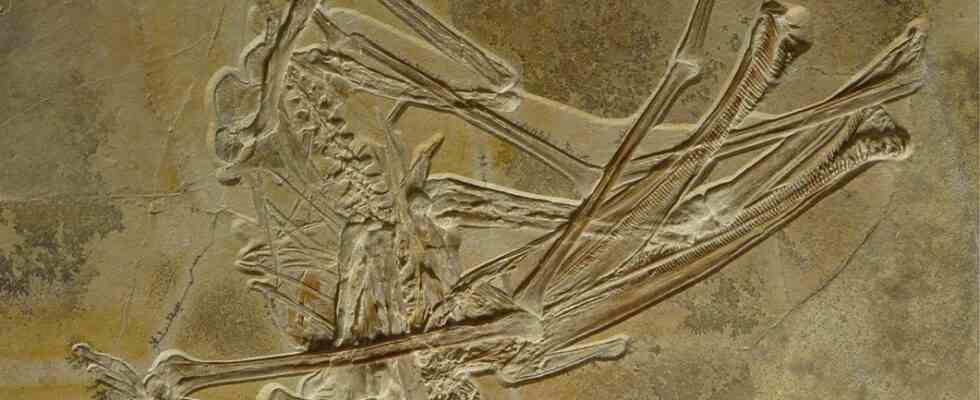The pterosaur, scientifically named Balaenognathus maeuseri, found in a quarry in Upper Franconia, lived around 154 million years ago.
Long legs, a spoon-shaped beak and more than 400 teeth, some of them hooked – scientists have discovered an unusual new species of pterosaur in a quarry in Upper Franconia. The German-English research team gave the new pterosaur the scientific name Balaenognathus maeuseri – the genus name translates as whale jaws, said the Natural History Museum in Bamberg on Tuesday. There you can see the almost complete skeleton of the pterodactyl. The name alludes to the fact that the dinosaur probably filtered its food out of the water like a baleen whale.
The research team, led by the University of Portsmouth, finds the shape of the teeth particularly noteworthy. “Some teeth have a hook at the end, which has never been seen in a pterosaur before,” shared lead author David Martill. The animal probably used the hooks to catch tiny crabs. The study appeared in the journal PalZ the Paleontological Society.
The pterosaur lived around 154 million years ago in what was then the flat lagoon landscape of the region. According to the experts, the teeth indicate an unusual diet for pterosaurs: Balaenognathus maeuseri probably used its spoon-shaped beak to suck in water. He then squeezed out excess liquid through his teeth, leaving shrimp and copepods stuck in his mouth.
Researchers accidentally found the well-preserved skeleton in autumn 2011 when they recovered a large block of limestone containing crocodile bones from the quarry near Wattendorf in the district of Bamberg. “The animal must have been buried in the sediment almost immediately after its death,” Martill suspects. All joints including the ligaments were still connected.
The new pterosaur was given its species name maeuseri in honor of the former director of the Natural History Museum in Bamberg, Matthias Mauser. He is also a co-author of the study but died while working on the August 2021 publication.
The Natural History Museum has been conducting scientific excavations in the quarry near Wattendorf since 2004. In 2000, fossils from the upper Jurassic period were discovered there. Many finds are on display in the Natural History Museum, including the world’s largest coelacanth from the Upper Jurassic, according to museum director Oliver Wings.

